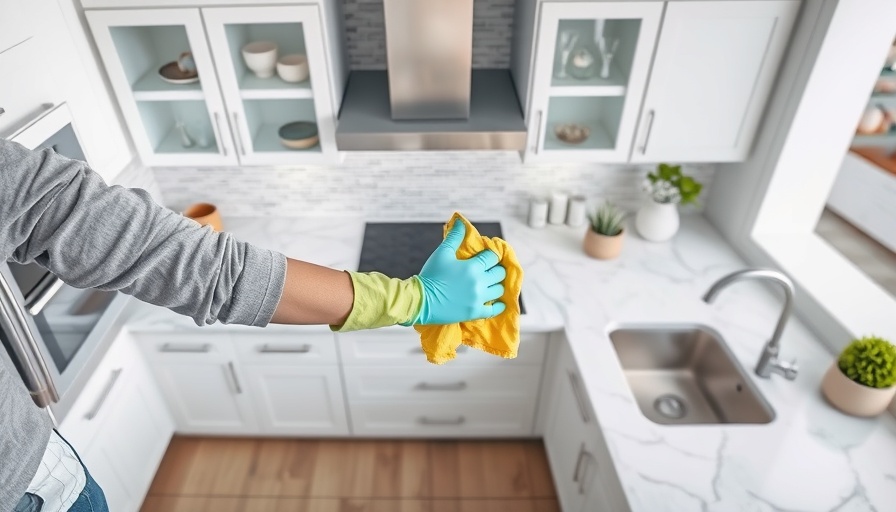
Embracing the Big Clean: Why Your Kitchen Needs It
Living in large Mississauga homes comes with its perks, including spacious kitchens that serve as the heart of family life. However, these expansive kitchens require extra attention to maintain cleanliness and hygiene. More cabinets, appliances, and foot traffic mean more spots for dirt, grease, and crumbs to accumulate. A recent study from Statistics Canada revealed that homes in Canada are getting larger, which translates to bigger messes in kitchens. Understanding the need for deep cleaning in your kitchen not only helps maintain its aesthetic appeal but also promotes a healthier environment for your family.
Step-by-Step Guide to Deep Cleaning Your Large Kitchen
With a plan in place, deep cleaning your kitchen can be less daunting. Here’s how to tackle every inch of your space systematically:
Step 1: Preparing Your Kitchen
Before you dive into cleaning, start by decluttering. Remove everything from the counters, cabinets, and drawers. Place items temporarily on your dining table or in boxes. This will not only make it easier to clean but will also give you an opportunity to check expiration dates on food items and donate any unused kitchenware. Gather your cleaning supplies, including:
- All-purpose cleaner
- Degreaser
- Glass cleaner
- Disinfectant wipes
- Microfiber cloths
- Scrub brushes
- Vacuum cleaner
- Mop and bucket
Step 2: Cabinets and Pantry First!
Start cleaning from the top cabinets, working your way down. Remove everything inside and wipe down the interiors, paying special attention to corners where crumbs tend to accumulate. Don’t forget to clean the cabinet doors and handles, which often harbor germs. In the pantry, be sure to check the expiration dates and wipe down the shelves. Consider rearranging your items by category, using clear containers for dry goods to prolong freshness.
Step 3: Focus on Countertops and Backsplash
Once the cabinets and pantry are clean, move onto the countertops and backsplash. This step is essential as these surfaces are often overlooked yet bear the brunt of cooking spills and stains. Use the appropriate cleaners for specific materials (e.g., granite, laminate) and ensure they are thoroughly dried afterward.
Embracing Sustainable Cleaning Practices
By adopting sustainable cleaning practices, you not only contribute positively to the environment but also ensure your home remains a safe space. Use eco-friendly cleaning products or DIY solutions such as vinegar and baking soda. These methods are not only efficient but also safe for your family and pets, reducing the risk of allergens and harsh chemicals.
The Value of Regular Maintenance
Deep cleaning your kitchen shouldn’t be an annual chore; instead, consider incorporating regular maintenance throughout the year. Establish a cleaning schedule, focusing on specific areas each week. A well-maintained kitchen will greatly enhance your quality of life by ensuring that your space is always fresh and inviting for cooking or entertaining guests.
Conclusion: Take the Leap!
Deep cleaning your kitchen may seem daunting, especially in large homes, but breaking it down into manageable steps makes the process easier and more productive. Not only will you enjoy a cleaner space, but you’ll also foster a healthier environment for your family. Are you ready to transform your kitchen?
Whether you're enjoying a bustling family life or frequenting guests, keeping your kitchen clean is a wonderful way to show you care about your home. So roll up your sleeves, gather your supplies, and let’s get started!
 Add Row
Add Row  Add
Add 



Write A Comment